Leading Light: Pavel Jandera
LCGC Europe
Pavel Jandera spoke to Frantisek Foret about building his own liquid chromatograph, the birth of “modern” high performance liquid chromatography (HPLC), the importance of exploring (and understanding) earlier research papers, current trends in contemporary chromatography, and his inspiring advice for aspiring chromatographers.
Pavel Jandera spoke to Frantisek Foret about building his own liquid chromatograph, the birth of “modern” high performance liquid chromatography (HPLC), the importance of exploring (and understanding) earlier research papers, current trends in contemporary chromatography, and his inspiring advice for aspiring chromatographers.
Frantisek Foret: What brought you into the field of analytical chemistry and chromatography?
Pavel Jandera: During my masters studies at the Institute of Chemical Technology in Pardubice, Czech Republic, in the late 1960s, I was attracted by analytical and physical chemistry more than other branches of technology. The Department of Analytical Chemistry was founded and, by that time, still chaired by Professor Miroslav JureÄek, the internationally recognized expert and author of excellent monographs in organic analysis.
Thanks to him, the profile of the department was focused on organic compounds more strongly than at other universities in Czechoslovakia and the students had the opportunity to study various aspects of chemical analysis in considerable detail including laboratory courses of elementary and functional analysis and microanalysis of organic compounds. The lecture course given by Associate Professor Jaroslav ChuráÄek was focused on the applications of spectroscopic and separation techniques in organic analysis. It was there that I came into practical contact with gas chromatography (GC), paper chromatography, thin-layer chromatography (TLC), and electrophoresis. I was impressed by the possibilities of simultaneous analysis of several sample components in a single run that was offered by these techniques. With an Ing. diploma in my pocket, I asked Professor ChuráÄek about the possibility of Ph.D. study in his group of separation sciences and he agreed (by that time the equivalent degree to Ph.D., the Candidate in Sciences, CSc, was used in our country).
I started in 1967 and was sent for two months’ experience to JiÅí Štamberg’s laboratory at the Macromolecular Chemistry Institute
of the Academy of Sciences in Prague, where they developed
plastic tubes with inner walls
treated by grafting ion-exchange groups to them. I had to investigate the possibilities of using these products as analytical separation media. Necessarily, this attempt was
a big failure because of the large
inner diameter and the unsuitably thick and dense grafted layer. This type of open ion-exchange column did not provide any separation efficiency.
Interestingly enough, 40 years later, our group returned to the principal idea, preparing and using organic–polymer monolithic capillary LC columns, this time with more success!
By that time, our library was surprisingly relatively well supplied with journals from the field - including Analytical Chemistry, Fresenius, Journal of Chromatography, Journal of Chromatographic Science, and Chromatographia - from which I learned about the breakthrough theoretical work accompanying the introduction of modern high performance liquid chromatography (HPLC). What a promising field for my dissertation! However, there was no available instrumentation on the market by that time, so I had to build my own liquid chromatograph from the parts used for various purposes in analytical laboratories. This was hard and often frustrating work, but finally I had a liquid chromatograph (working up to 50 bar) on my desk. During this time I learned a lot about setting up and adjusting the instrument and packing glass columns with silica particles, on which I performed all the experiments for my dissertation.
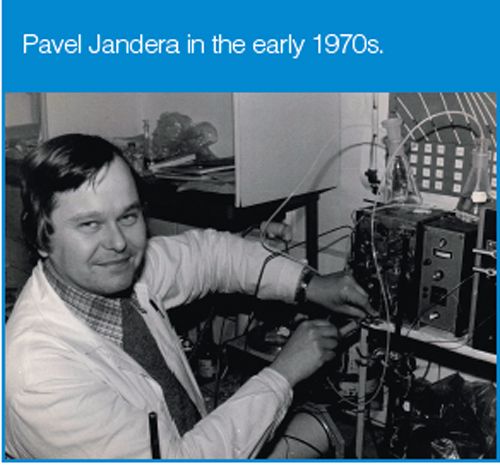
FF:Who was the most influential person for you?
PJ: It would be difficult to select just a single person from those who influenced me in various ways. First, there were my teachers: Professor JureÄek gave me a rare moral example of a most righteous and honest person, a scientist highly dedicated to his field of organic analysis; an excellent teacher, always willing to offer the best of his knowledge to a young generation of students and followers.
My dissertation advisor, boss, and good friend for years, Jaroslav ChuráÄek, constantly encouraged me and offered good advice. I also owe a lot to another great person of Czech chromatography, the late Professor Karel Macek, who introduced me to the editorial board of my favourite journal, the Journal of Chromatography, where I have been serving for many years. Later, as a postdoctoral fellow, I had the opportunity to join for some time the research groups of the recently deceased guru of separation science, Professor Georges Guiochon, first at the Ecole Polytechnique in France in 1980 and later at the University of Tennessee in Knoxville, USA.
FF: What do you think is your greatest scientific contribution and your biggest mistake?
PJ: It became evident to me very early on that for fundamental reasons HPLC cannot compete in efficiency of separation with, by that time, the already well established technique of GC. HPLC has four orders of magnitude slower diffusion. However, HPLC outperforms GC in the separation of biologically and industrially important polar, ionic, and macromolecular compounds. To fully utilize the possibility of LC in this area, we can optimize the differences in the affinity of the sample components to the stationary and the mobile phases, that is, the selectivity of separation, by adjusting not only the chemistry of the stationary phase, but also by selecting and optimizing the composition of the mobile phase; this is not available in GC, where the mobile phase is a gas.
Adjustment of the separation by selecting the appropriate composition of mixed mobile phases is the approach that has been used for years in planar (paper and TLC) chromatography, on the empirical base. In my opinion, the exact composition of most three-, four-,
and even more- component mobile phases recommended in the published recipes for the separation of particular samples by planar techniques reflect the bottles of solvents standing on the authors’ laboratory desk shelves, rather than a rationally justified selection. This can be OK with the cheap planar chromatography techniques, but relatively expensive modern HPLC obviously needs a more systematic approach to the selection of mobile phases, which should be based on a rational retention model. I decided to orient my research activities in that direction.
Several early models can be found in the literature, but - in my opinion - the major part of the useful work should be attributed to L.R. Snyder and his group, particularly in normal-phase adsorption chromatography (1) and in reversed-phase chromatography introduced in the early 1970s, based on the work by J.J. Kirkland’s, I. Halász’s, Cs. Horváth’s, and several other groups (2,3,4,5).
In 1977, I visited Professors I. Halasz and H. Engelhard in Saarbruecken, Germany, where I learned the practical basics of chemical modification of silica gel and the packing of efficient HPLC columns with 10-μm- and 5-μm bonded phase particles (by that time standard) - techniques I later used at the Department of Analytical Chemistry in Pardubice, where I became a staff member. Reversed-phase separations on chemically bonded C18 and C8 alkyl silica columns in aqueous–organic mobile phases soon became so extremely successful that they - in the view of many users - became practically a synonym for the whole HPLC practice. Hence, the work on the theoretical retention models focused mainly on the reversed-phase chromatographic system; the plethora of other HPLC possibilities seemed to have fallen temporarily into oblivion. Snyder and co-workers have applied simple linear correlation between the logarithm of distribution constant and the volume fraction of organic solvent in binary aqueous–organic mobile phases in their linear solvent strength (LSS) model for prediction of retention in both isocratic and gradient HPLC, which was later incorporated into commercial software (6).
However, some systems are not very well described by the LSS model. We selected a more general approach to modelling, which was suitable both for LC systems where not only LSS but also other retention equations may apply. These can be combined with equations describing linear (and even non-linear) mobile phase programmes, to predict the retention in various reversed-phase, adsorption-, normal-phase, and ion-exchange gradient elution modes. The basis of this approach, which I value the most from my achievements, was published in 1974 in the Journal of Chromatography and subsequently refined in a plethora of original papers, reviews, and in a monograph published together with Jaroslav ChuráÄek (7). A reduced Czech version appeared in the same year at the publishing house Academia in Prague (8).
My work in this period was largely based on modelling, which is an extremely useful tool for method development and optimization. However, a few words of warning: modelling should be used carefully, which is often not the case, as can be seen in some published papers. First, the retention model uses equations with parameters, as determined by the regression analysis of experimental data. Hence, the model can only be as reliable as the experimental data, which should be acquired in the mobile phase range providing not too weak a retention is achieved, otherwise the model can be subject to gross errors. This is because the thermodynamic distribution constant of a solute between the stationary and the mobile phase is not directly proportional to the experimental retention time, tR, but to the reduced retention time, t’R, that is, to the difference between the measured retention time, tR, and the elution time of a non-retained compound, t0 (so-called dead or hold-up time of the column). Because the experimental errors in both tR and t0 combine, the uncertainty in t’R significantly increases for weakly retained compounds eluting close to the column hold-up time. As almost all retention models acquire the parameters by the regression of the t’R or their logarithms, the reliability of the model parameters becomes questionable if obtained employing too low experimental t’R.
Furthermore, a good fit of the experimental data to the regression retention model equation alone does not prove the physical correctness of the model. From a mathematical point of view, the fit of experimental data to a model regression equation always improves with an increasing number of model parameters; however, this does not necessarily mean that the additional parameters have any physical meaning. The model should be tested with a variety of samples and separation conditions before it can be more or less generalized. This was very well characterized by Pat Sandra: “Models should be used, but not believed.”
As far as the second part of question is concerned, it is impossible to avoid mistakes when searching for new solutions to problems; I cannot count mine. However, the failures can be very useful and can often be turned to the advantage in the long term. I can give an example: Pardubice is a centre of chemical industry, which has supplied us with numerous analytical problems. One such problem arose from the production of synthetic dyes, where a method for the control of purity of naphthalene sulphonic acid intermediates was badly needed. Ion-exchange and ion-pairing chromatography could separate them into groups containing 1–4 sulphonic functionalities (SO3-), but failed to distinguish the isomers in the individual groups. The reason is that all acids are fully ionized and their acidity is comparable with strong mineral acids. Searching for another solution, we realized that the isomers show important differences in permanent dipole moments affecting the ion-exclusion from non-polar stationary phases. The combined effects of hydrophobic and ion-exclusion interactions allowed us to achieve nice isomer separations on bonded C18 columns with suitable pore morphology in aqueous–organic mobile phases containing relatively high concentrations of salts such as sodium or ammonium sulphate (9).

FF: What areas of separation science are you focusing on at the moment?
PJ: There are two trends I can see in contemporary analytical science. The first is developing fast, simple, and reliable methods for detecting the presence and estimating the quantity of biologically, clinically, or environmentally important compounds: the solution is obviously finding suitable sensors for specific target compounds or their classes.
The second trend is finding methods that allow simultaneous determination of as many components as possible in complex samples, which is my present area of interest. Two-dimensional liquid chromatography (LC×LC) allows a significant increase in the number of separated sample components, which cannot be achieved in a comparable time on a single column. My main focus is on setting-up two-dimensional LC systems with large differences in selectivity between the first- and the second-dimension systems, such as combining reversed-phase and hydrophilic interaction liquid chromatography (HILIC).
Almost all stationary phases used in contemporary HPLC are bonded on silica (less often on zirconia or other metal oxides) because of the excellent separation efficiency. However, organic polymer stationary phases still remain largely unexplored (a few commercial products are rare exceptions), in spite of excellent temperature stability, and a large variety of chemistries that can be prepared by polymerization, either in particulate or in monolithic format.
Organic polymer monolithic capillary columns and micro-columns are the second area of my present research interest. So far, we have succeeded in preparation of monolithic stationary phases showing different properties when changing the mobile phase. When used in combination with an efficient short second-dimension column, the same two-dimensional setup can be used in different phase combinations (reversed-phase×reversed-phase and HILIC×reversed-phase) in successive runs with alternating gradients of increasing and decreasing concentration of acetonitrile in water (10).
FF: What major challenges remain in separation sciences? What areas of separation science do you see as most exciting?
PJ: The main problem is that we are often faced with the analysis of samples containing millions of compounds in concentrations spanning over several orders of magnitude. On the basis of very limited knowledge, we guess which of them are the most important. This guess may or may not be right. We can only approach the information on such samples by detecting (not to say identifying) a few thousand, or even a few tens of thousands of them using multidimensional chromatography coupled to mass spectrometry and - possibly - to other spectroscopic techniques. It is frustrating that the more chromatographic dimensions we couple on-line, the more we dilute the sample, and the more we lose in terms of sensitivity. Any approach towards a solution to this problem would be very welcome. A possible step on this way may be using selective off-line multidimensional systems, using new stationary phase chemistries.
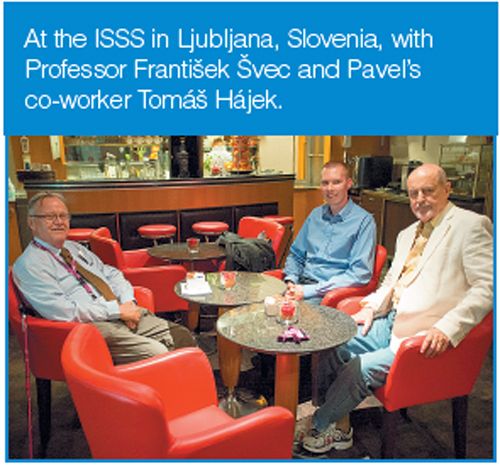
FF: Among all the awards you have received, which one was the most remarkable award to you?
PJ: The highly prestigious AJP Martin Medal awarded by the Chromatographic Society. I also greatly appreciate the Jaroslav Janák medal, which I recently obtained from the Institute of Analytical Chemistry of the Czech Academy of Science. I hold Jaroslav in high esteem as the co-inventor of GC, a giant of Czech chromatography, an example to all scientists, and also a friend of mine.
FF: Do you think scientific evaluation is becoming too bureaucratic?
PJ: This is a very good question. Obviously, the original intention was to control the funding of science from public sources and to distinguish between the “good” and the “bad” (or “less good”) research to allocate the funds most efficiently. However, I am afraid that the output of this effort has been counterproductive so far. It is based on the idea of providing an objective tool that can be simply evaluated and used by anyone.
The frequent scientometric criteria used in the common databases such as the number of citations and h-index have often been criticized because they can give an approximate idea on the relative merits of the research results achieved by experienced researchers, but are not very suitable for administrative workers to evaluate the quality of scientific work. So another system was developed that gave point values for results published in less important local journals and for presentations at some selected indexed conferences, often not the highest level ones. The point system is usually meticulously controlled and used as the basis for evaluating the research institutions and the individual scientists, for the purpose of distribution of public research funds.
In addition the criteria are often strange, essentially counting the numbers of the publications, and do not distinguish between, sometimes very significant, differences in the quality of articles published in the same journal. The quality of the results can be best judged by the experienced scientists working in the field; however, because there are usually only a few knowledgeable people working in a specific research area, they are a-priori suspected to not provide an objective evaluation because of a possible conflict of interests. Hence, scientists are motivated by acquiring the highest point values rather than doing high quality research, which often does not bring immediate output in the points. I am afraid that this system of hunting for points often results in average or even sub-average research, probably contrary to the original intention.
FF: If you had a second chance would you select science for your career?
PJ: Scientific research has changed a lot since I started my academic career, turning more and more towards business, and oriented on fast output rather than on thorough fundamental understanding of the problems. Of course, on the one hand, the advances in the instrumentation available for research has been formidable. On the other hand, some researchers do not find time to read up on the earlier scientific literature related to their research and instead rely on the automated search software, but by doing this they may miss something very important. Some do not even read the literature they present in the list of references, which is often irrelevant or even incorrect. Quite frequently, “new” reports appear on the research essentially similar to that described in publications 10-, 20-, or even 40-years ago. Even though the editors and reviewers should take care to avoid this, the problem is becoming more serious with an ever-increasing abundance of new open access journals desperately looking for articles. Finally, scientists have less and less time to spend in their laboratories because they have to struggle for the research funds by preparing new projects and writing reports on the ongoing ones.
To answer your question: In spite of these problems, I think I would select science as a career, preferably again at a university. I like solving problems and sharing my knowledge with students. I appreciate being among young people. One does not have time to realize how he or she is growing old!
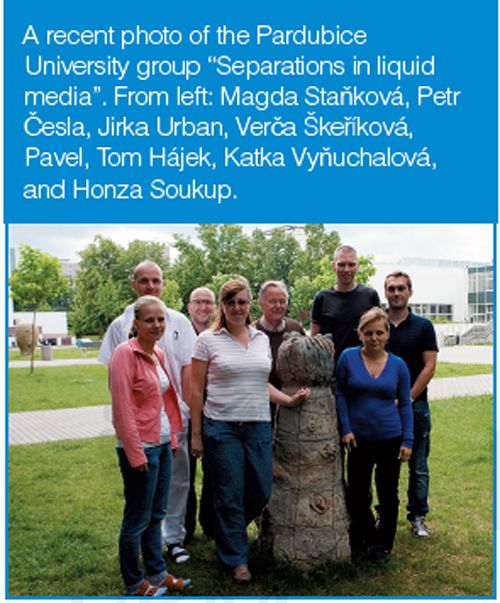
FF: Is there any advice you would give to young scientists embarking on a career in analytical chemistry?
PJ: Practising analysts are likely to find good jobs. Young people who are intent on pursuing a research career in analytical chemistry may have a harder life. For them, it is essential to find a good team with long-term research programme objectives.
Almost 400 years ago, the famous French writer and satirist La Rochefoucauld said that “Old men usually give good advice when they cannot give bad examples anymore”. Hence, I am not sure if the scientists starting out now would really appreciate any of my advice and take it seriously. If I am to send a message to them anyway there are two general, not original, but sometimes neglected items: (i) Before starting the experiment, it is useful to check in the literature if anybody has performed the same or similar research earlier; believe me, this is not a waste of time, you may avoid re-discovering America. Furthermore, the more preliminary information you get on the problem, the better your chance for success. (ii) When you get the experimental results, check the quality of the data and be careful in its interpretation; try to avoid “wishful thinking” - often there may be more possible explanations of your observations than the first one that comes to mind.
References
- L.R. Snyder, Principles of Adsorption Chromatography (Dekker, New York, USA, 1968).
- L.R. Snyder, J. Chromatogr. Sci. 7, 352 (1969).
- I. Halász and I. Sebestian, Angewandte Chemie - International Edition8, 453 (1969).
- J.J. Kirkland, Anal. Chem.41, 218 (1969).
- C.G. Horváth, B.A. Preiss, and S.R. Lipsky, Anal. Chem.39, 1422 (1967).
- L.R. Snyder and J.W. Dolan, Adv. Chromatogr.38, 115 (1998).
- P. Jandera and J. ChuráÄek, Gradient Elution in Column Liquid Chromatography - Theory and Practice (Elsevier, Amsterdam, The Netherlands, 1985).
- P. Jandera and J. ChuráÄek, Liquid Chromatography with programmed composition of mobile phase, (Academia, Praha, 1984) (in Czech).
- P. Jandera and J. ChuráÄek, J. Chromatogr.197, 181 (1980).
- P. Jandera, M. StaÅková, and T. Hájek, Journal of Separation Science36(15), 2430 (2013).
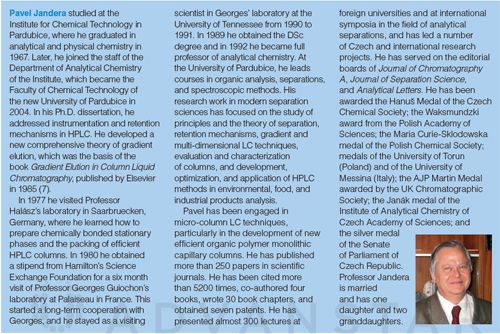
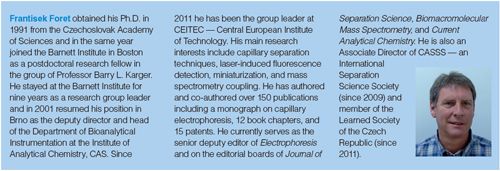
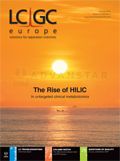
Understanding FDA Recommendations for N-Nitrosamine Impurity Levels
April 17th 2025We spoke with Josh Hoerner, general manager of Purisys, which specializes in a small volume custom synthesis and specialized controlled substance manufacturing, to gain his perspective on FDA’s recommendations for acceptable intake limits for N-nitrosamine impurities.
University of Rouen-Normandy Scientists Explore Eco-Friendly Sampling Approach for GC-HRMS
April 17th 2025Root exudates—substances secreted by living plant roots—are challenging to sample, as they are typically extracted using artificial devices and can vary widely in both quantity and composition across plant species.
Determining the Serum Proteomic Profile in Migraine Patients with LC–MS
April 17th 2025Researchers used liquid chromatography–mass spectrometry (LC–MS) in their proteomic analysis to compare the serum proteome of migraine patients with healthy controls and to identify differentially expressed proteins as potential migraine biomarkers.












